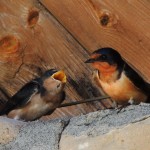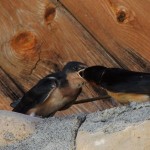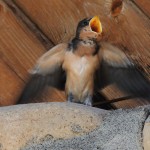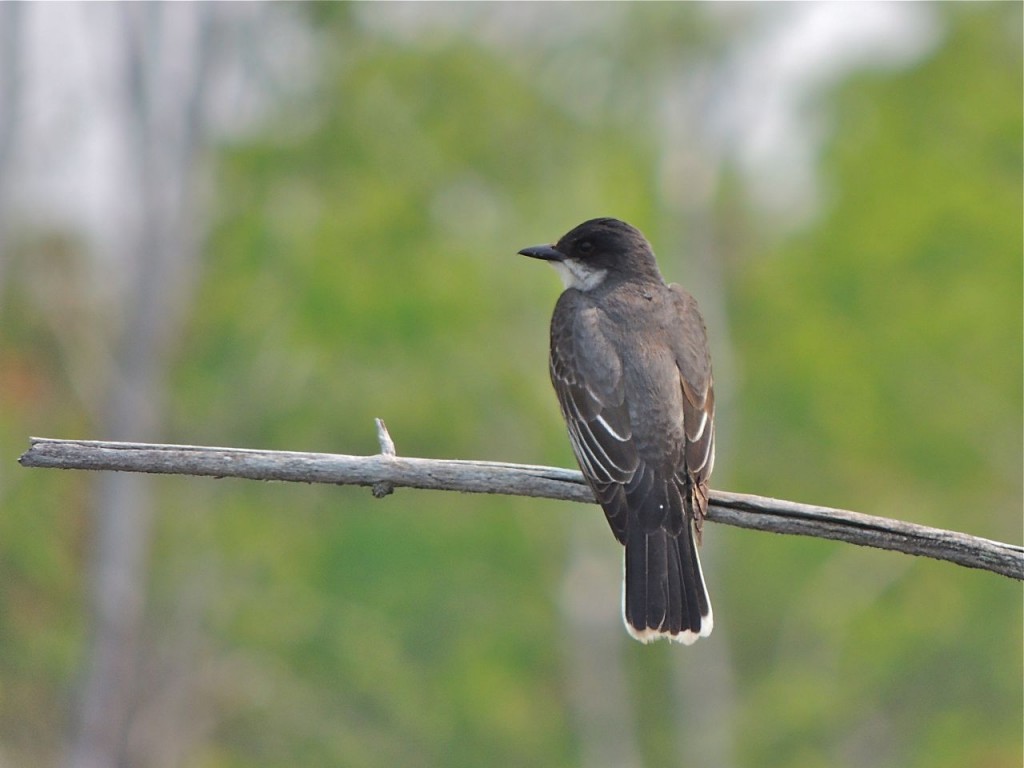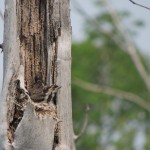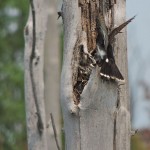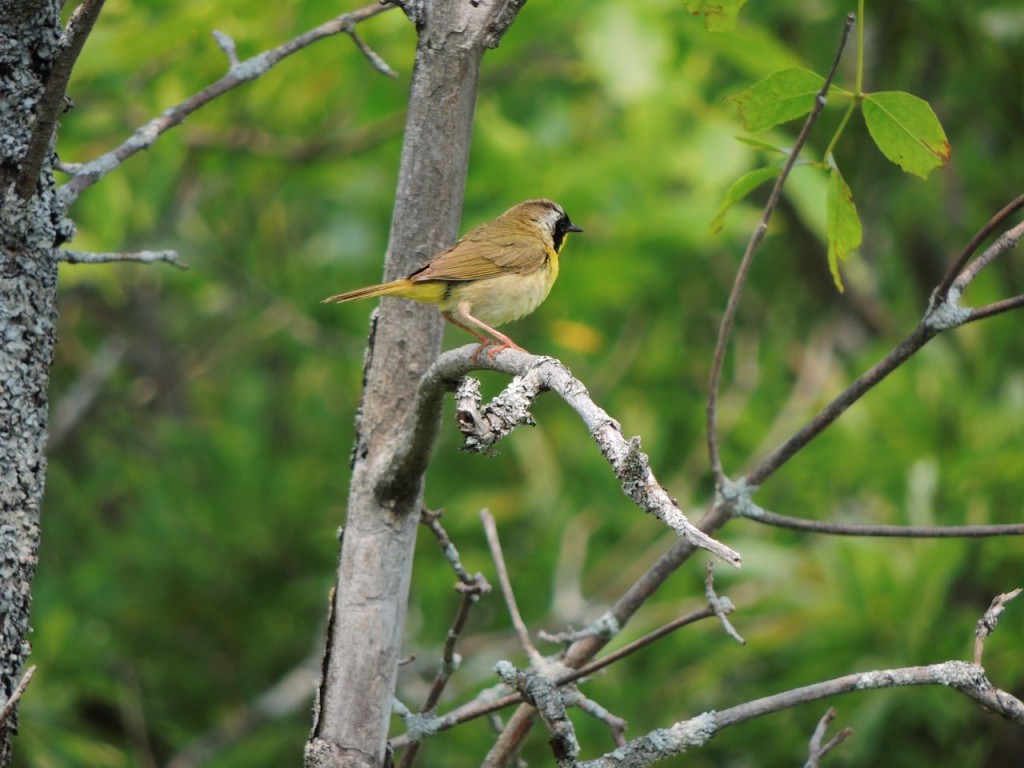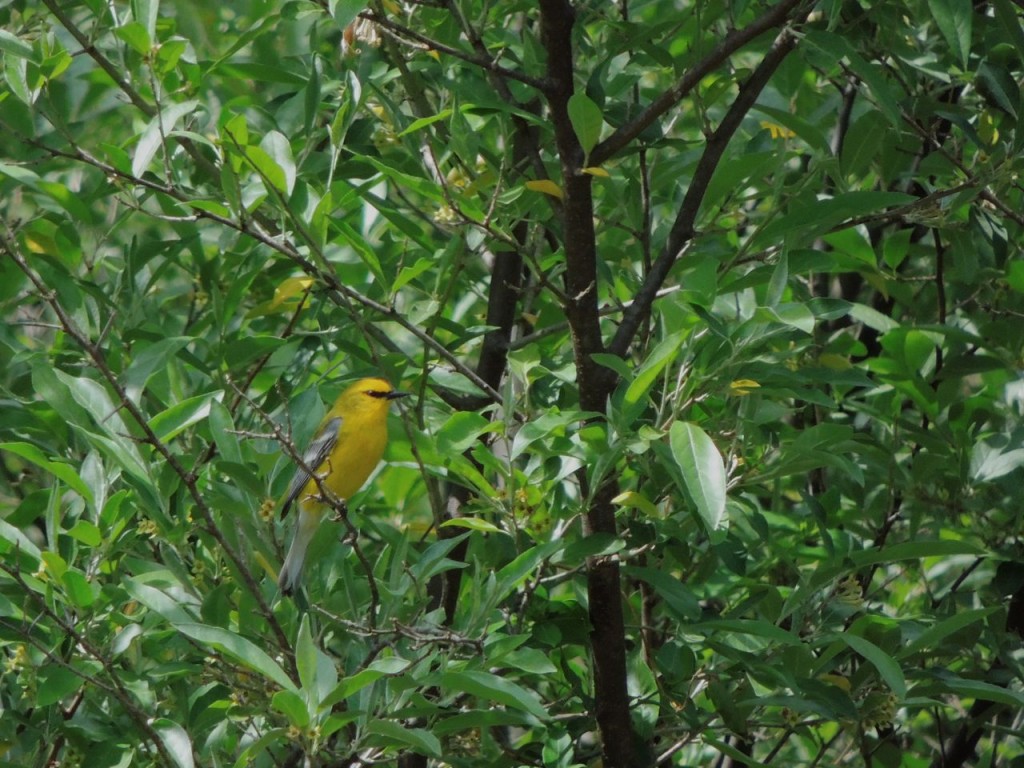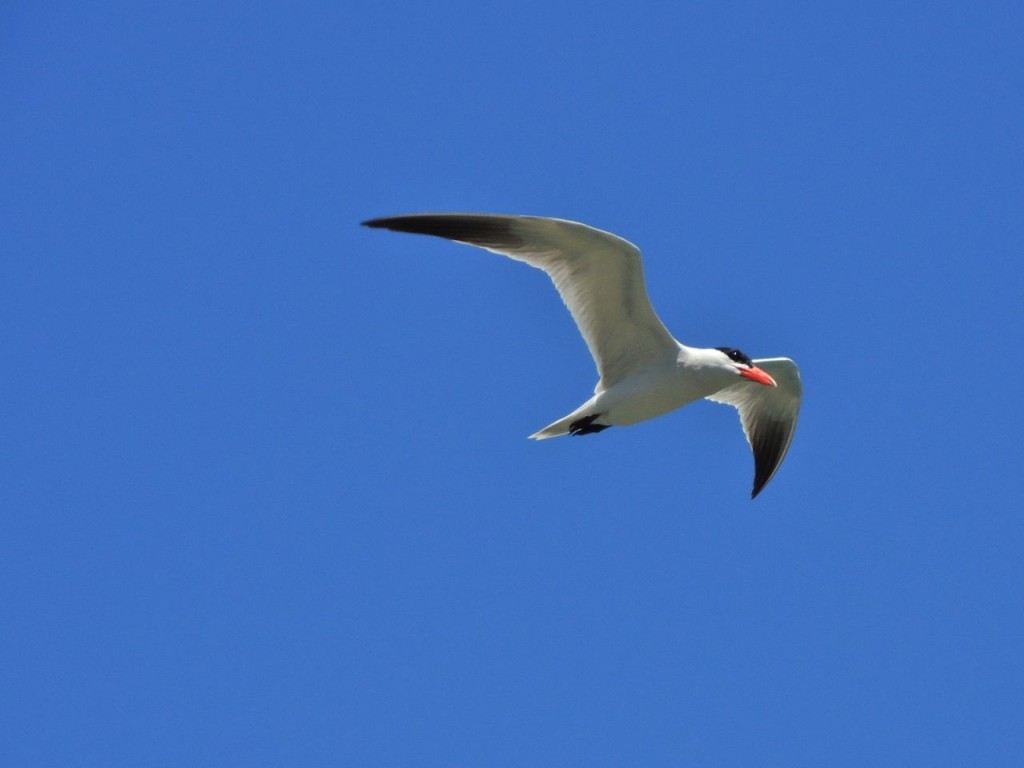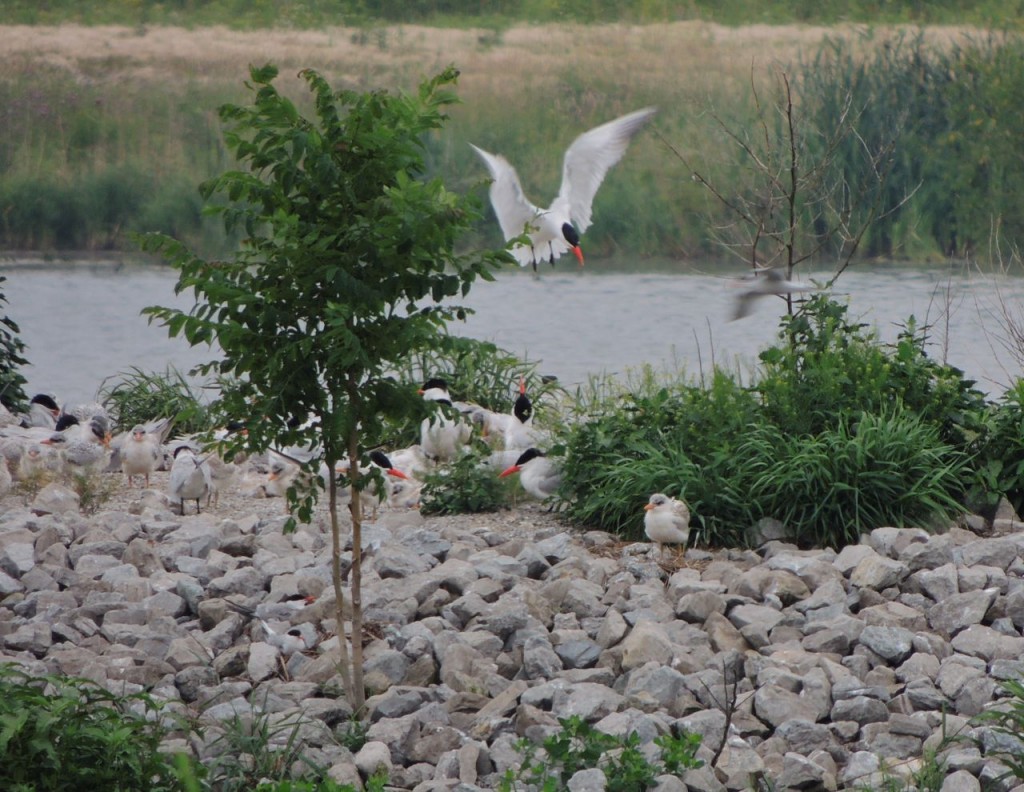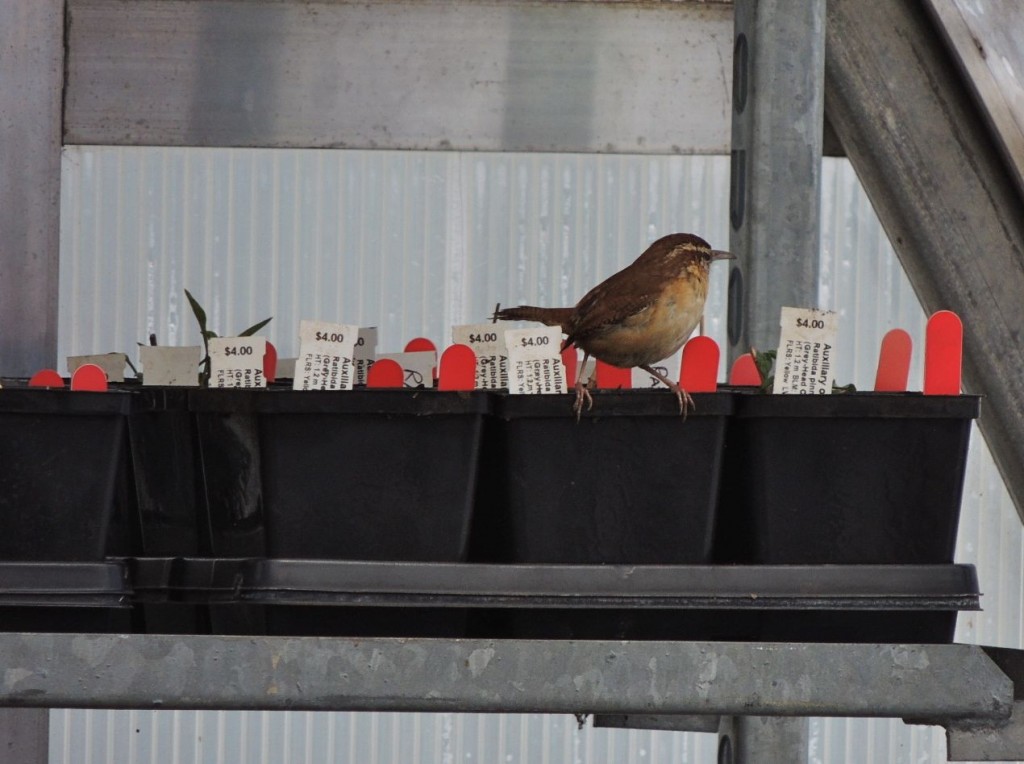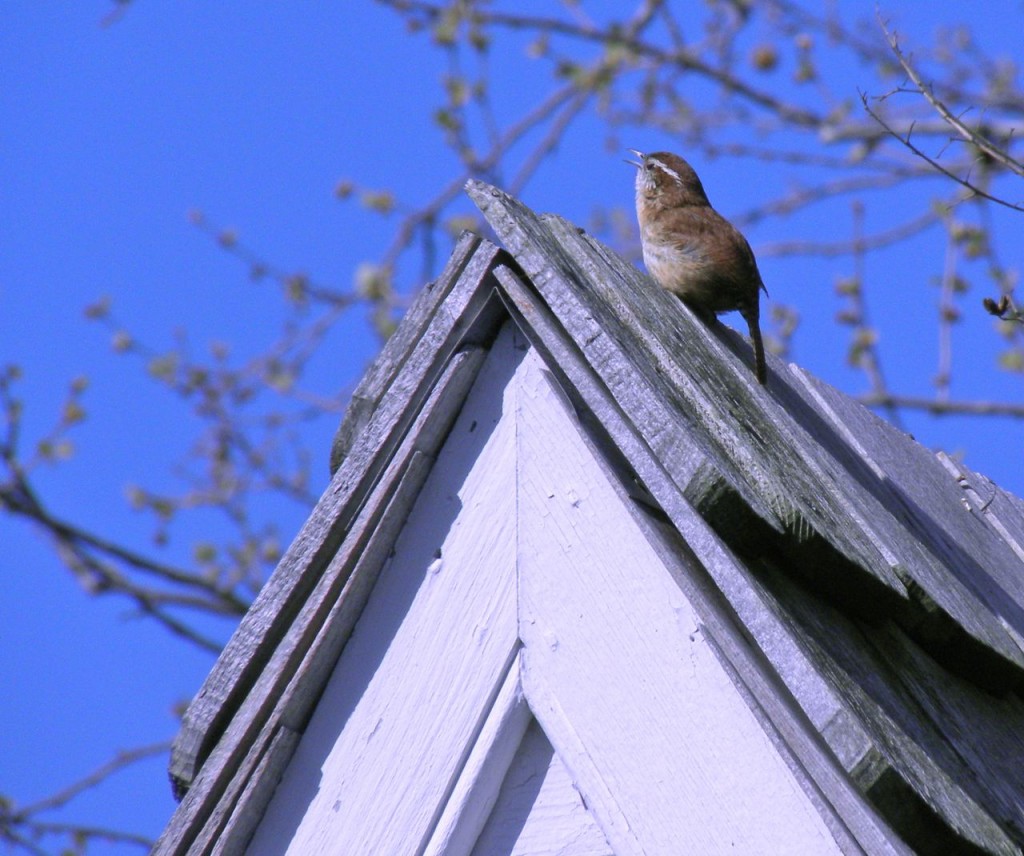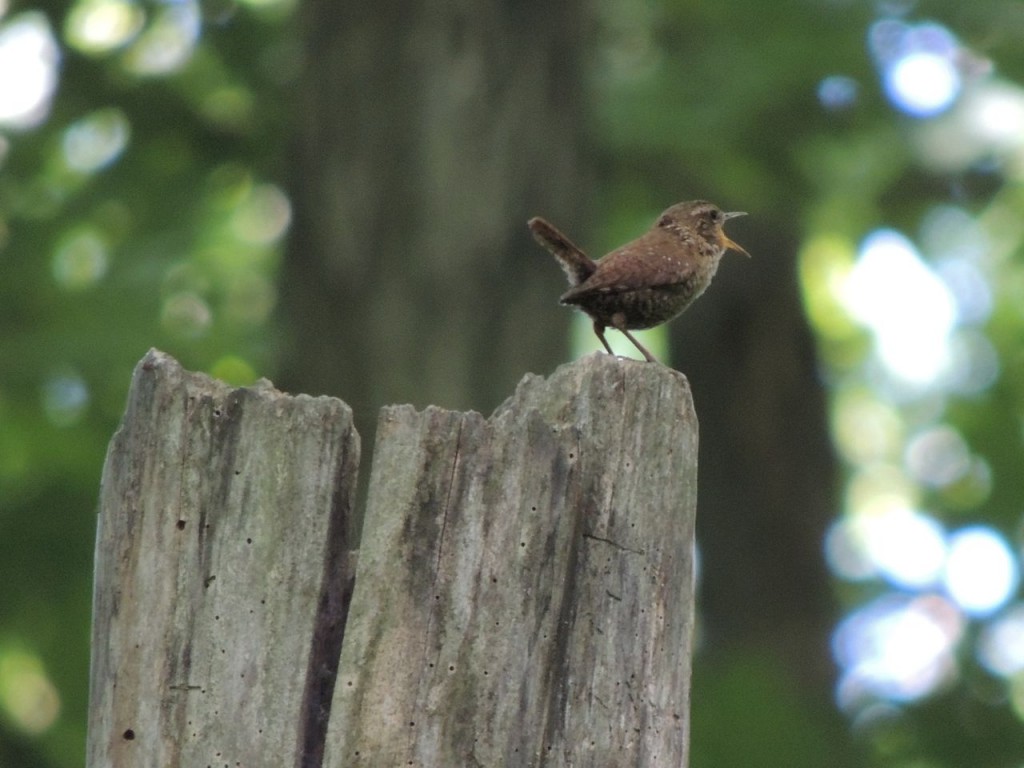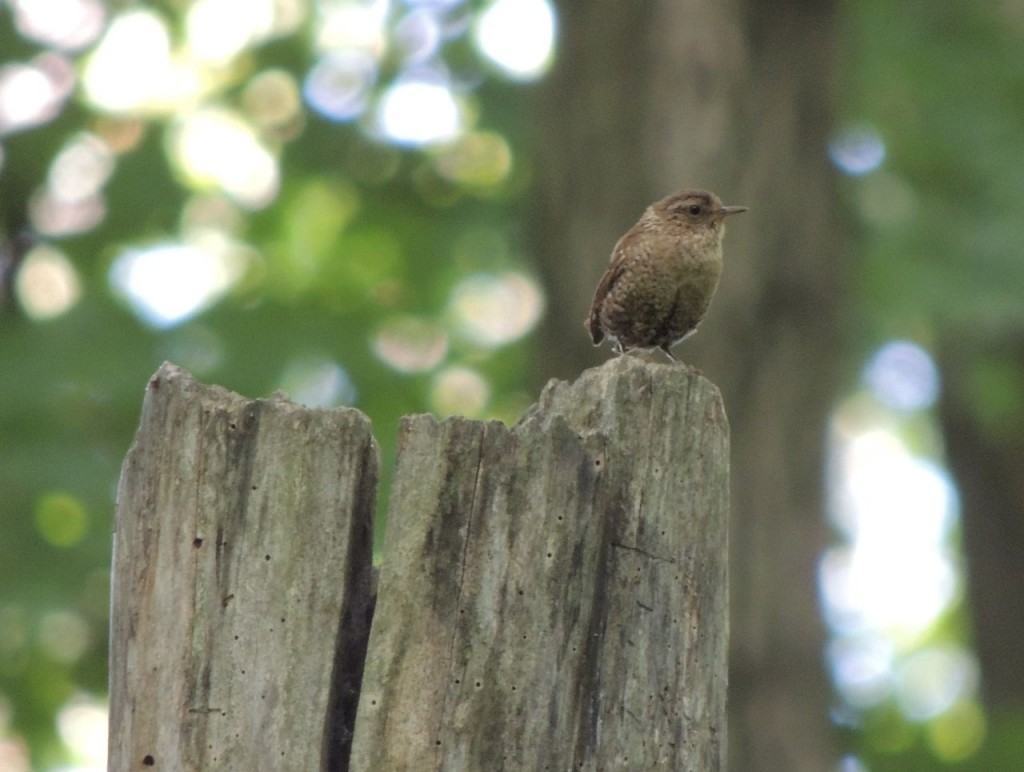9-11 July 2015. Wingfield Basin, Bruce Peninsula, ON. It is our privilege, on many counts, to be staying for a week in a spacious and comfortable, if slightly down-at-the-heels, cottage on the shore of Lake Huron. Any demerit points accrued by the cottage’s lack of polish are amply made up by its delicious remoteness, the spectacular view from the back porch and its almost total disconnection with the wired world.
From the back porch we look across The Basin, a sheltered harbour that finds favour with passing yachts almost every evening.
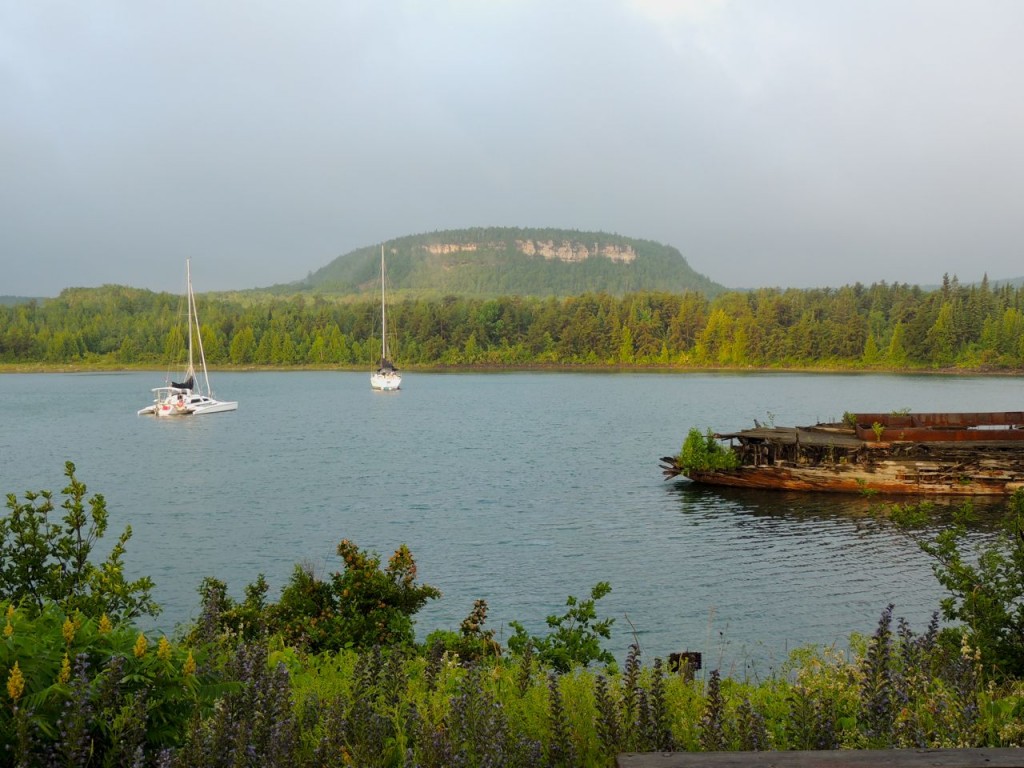
There’s lots of wildlife too. Majestic birds: Bald Eagles, Sandhill Cranes and Merlins come to mind, while the trees all around carry the songs of American Redstarts, Yellow-rumped Warblers and Red-eyed Vireos. Out on the Basin are small flotillas of young Common Mergansers, a group of Ring-necked Ducks and the odd Common Loon.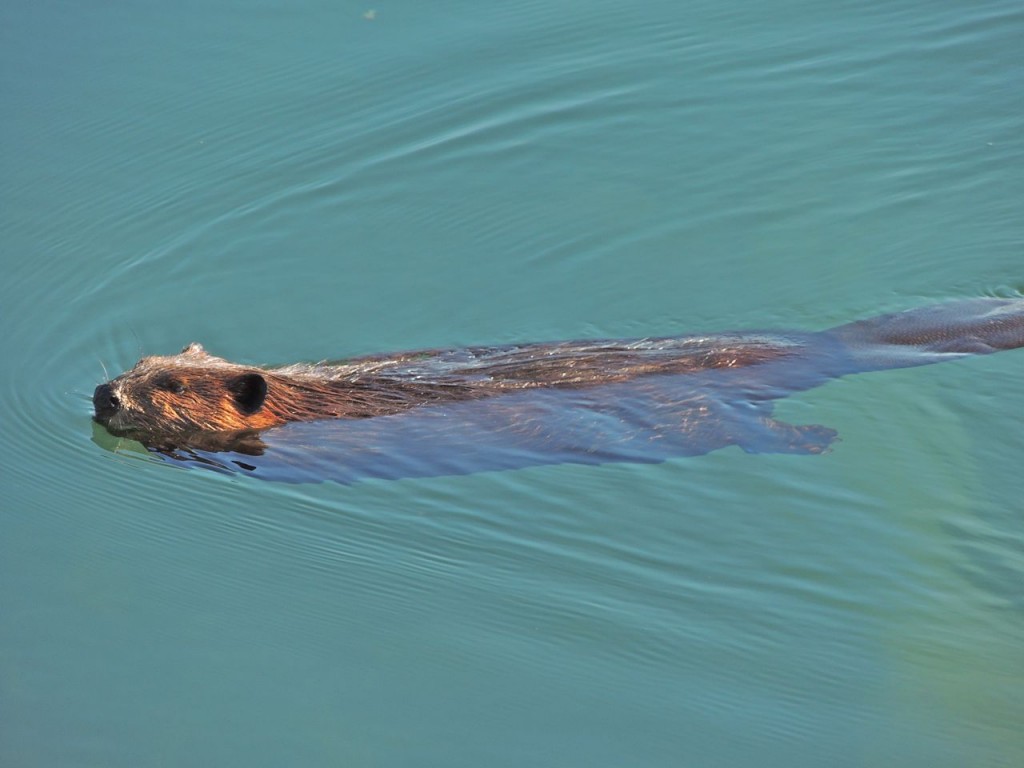
Beavers have appropriated the burned-out and decaying hull of a once-working ship, the Gargantua, we watch them plowing the waters and bringing small branches back to the lodge; perhaps food for their kits; and this morning a young Black Bear was ambling along the far shore.
The birding is brilliant in spring and fall; indeed this cottage is the home of the Bruce Peninsula Bird Observatory and the streams of migrants make it a very busy place. Off season, summer anyway, it’s available to users who agree to take on the responsibilities of being the Warden.
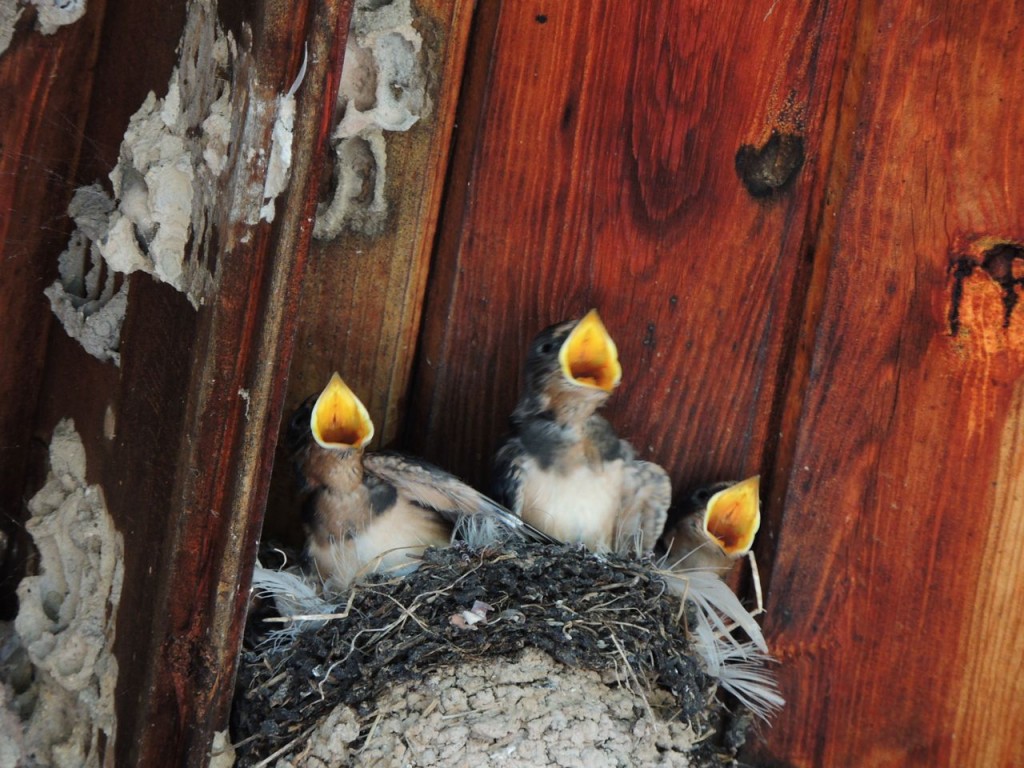
Part of the natural charm here is the Barn Swallows‘ nest over the back door. In the days immediately following arrival, the nest was full of hungry youngsters, four of them competitively craning their necks and pleading with bright yellow gapes for the next delivery of insects. There is no end to the parents’ day long task of gathering food, most of which is building young swallows capable of flying to the Amazon Basin in a couple of months.
On Thursday the first of the brood, perhaps the oldest by a few hours, left the nest. It evidently fluttered, rather than flew, to safety on a somewhat lower ledge. There the parents continued to feed it, dividing their attention between the three still spilling out of the nest above and the fledgling below. We were able to watch at quite close quarters as the escapee visually tracked the approach of a food-bearing parent and if that parent came close, it started the wing-fluttering and wide-mouthed begging that had worked so well for it.
As night fell, things suddenly didn’t go too well. The fledgling flopped to the ground just outside our window and from inside we watched the parent anxiously trying to coax it into flight. The parent would land a few inches from the babe who immediately assumed it was going to be fed, instead the parent took off, chipping encouragement as it went, and then returned moments later for another try. We left them to it, knowing there was nothing we could possibly do to help and fearing that our presence might compromise the parents’ efforts.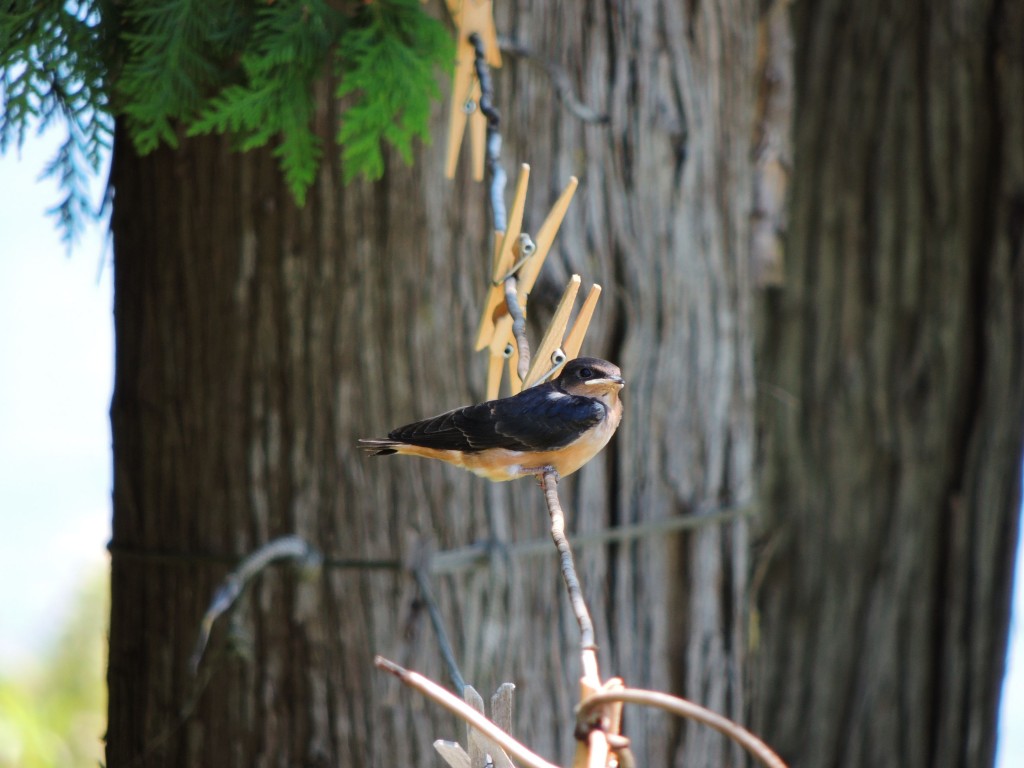
It could fly, if weakly, but somehow the youngster got through the night. In the morning we found it sitting and swaying precariously at the end of the clothesline. After that we lost track of it, and by day’s end I feared that it had somehow perished. There are too many perils around Wingfield Basin, what with hunting Merlins, predatory gulls and the chance of crash landing in open water; indeed most young birds fail to make it through their first year.
The story has a happy ending though. On the last day of our stay we could once again see four hungry mouths in the nest, so somehow it had managed to get back up to rejoin its siblings. No mean feat since the nest was in the apex of the roof over our porch. What I’d taken as a fledgling taking its first pre-ordained flights seems instead to have been a case of someone falling out of bed.
(This post contains photos in galleries visible only on the website, not if you’re reading this as an email.)
